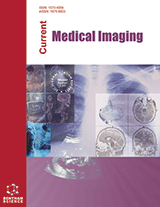
Abstract
Dynamic contrast enhanced MRI (DCE-MRI) enables the quantitative assessment of tumor status and has found application in both pre-clinical tumor models as well as clinical oncology. DCE-MRI requires the serial acquisition of images before and after the injection of a paramagnetic contrast agent so that the variation of MR signal intensity with time can be recorded for each image voxel. As the agent enters into a tissue, it changes the MR signal intensity from the tissue to a degree that depends on the local concentration. After the agent is transported out of the tissue, the MR signal intensity returns to its baseline value. By analyzing the associated signal intensity time course using an appropriate mathematical model, physiological parameters related to blood flow, vessel permeability, and tissue volume fractions can be extracted for each voxel or region of interest. In this review we first discuss the basic physics of this methodology, and then present technical aspects of how DCE-MRI data are acquired and analyzed. We also discuss appropriate models of contrast agent kinetics and how these can be used to elucidate tissue characteristics of importance in cancer biology. We conclude by briefly summarizing some future goals and demands of DCE-MRI.
Keywords: DCE-MRI, pharmacokinetics, cancer, compartmental modeling, contrast agent










